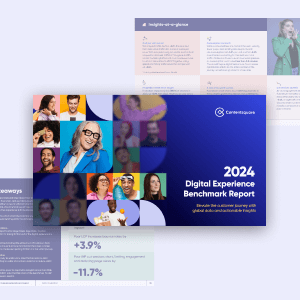Improve user experience: 10 strategic techniques to elevate UX

User interface and website design are at the forefront of enhancing user experience.
Let’s start with the 10 strategy techniques…
10 strategic techniques to improve user experience
- Simplify the design: Keep the design clean and minimalistic to avoid overwhelming users. Use white space effectively and ensure that the interface is intuitive and easy to navigate.
- Optimize website speed: Slow-loading websites can lead to frustration and high bounce rates. Optimize the website’s performance by compressing images, minifying code, and utilizing caching techniques.
- Enhance mobile responsiveness: With the increasing use of mobile devices, it is crucial to ensure that your website is fully responsive and provides a seamless experience across different screen sizes.
- Improve website accessibility: Make your website accessible to all users, including those with disabilities. Follow accessibility guidelines, such as providing alternative text for images and ensuring keyboard navigation.
- Conduct user research: Gain insights into your target audience by conducting user research. Understand their needs, preferences, and pain points to tailor the user experience accordingly.
- Implement intuitive navigation: Design a clear and logical navigation structure that allows users to easily find what they are looking for. Use descriptive labels and organize content in a hierarchical manner.
- Provide relevant and engaging content: Deliver high-quality and relevant content that aligns with your target audience’s interests and needs. Use visuals, videos, and interactive elements to make the content more engaging.
- Incorporate social proof: Build trust and credibility by incorporating social proof, such as customer testimonials, reviews, and ratings. This can help users make informed decisions and feel more confident in their interactions with your brand.
- Implement a user-friendly checkout process: If you have an e-commerce website, optimize the checkout process to be smooth and intuitive. Minimize the number of steps required and offer guest checkout options.
- Continuously test and iterate: Regularly test your website’s usability and gather feedback from users. Use tools like A/B testing to identify areas for improvement and make iterative changes to enhance the user experience. By implementing these strategies and techniques, you can create a positive user experience that will not only satisfy your users but also drive business growth and success.
Why is user experience crucial?
User experience plays a pivotal role in driving user engagement and customer satisfaction.
When users have a positive experience on your website, facilitated by an intuitive user interface and smooth interaction design, they are more likely to engage with your content and return in the future. This can lead to increased website traffic, higher conversion rates, and improved customer satisfaction.
Moreover, user experience significantly impacts your website’s search engine ranking. Search engines consider user experience factors, such as website speed and navigation optimization, when ranking websites in search results. By enhancing these aspects, you can improve your search engine ranking, thereby increasing your online visibility. Finally, user experience can influence your brand’s reputation.
A positive user experience, achieved through thorough usability testing and user research, can enhance your brand’s reputation. Conversely, a negative user experience can harm it.
Prioritizing user experience, therefore, is crucial for building a strong brand reputation.
The importance of user experience
In today’s competitive digital landscape, providing a positive user experience can set your website apart. A positive user experience, characterized by an intuitive user interface, optimized navigation, and efficient website speed, can make users feel valued, leading to increased loyalty and customer satisfaction. Furthermore, user experience can influence purchasing decisions.
A positive user experience can encourage users to make a purchase, while a negative one can deter them. By improving your website’s user experience through usability testing, user research, and feedback surveys, you can increase your conversion rates and boost your revenue. Lastly, user experience can impact your website’s accessibility. A website with poor user experience can be challenging for users with disabilities to use. By prioritizing user experience and ensuring mobile responsiveness, your website can be accessible to all users, regardless of their abilities.
UX vs UI: understanding the difference
The User Experience (UX) and User Interface (UI) are two distinct yet interrelated facets of website design. UX design is a comprehensive, multidisciplinary approach that encompasses all aspects of the end-user’s interaction with a company, its services, and its products. It is a complex process involving elements of psychology, sociology, and design. UX design aims to optimize customer satisfaction by creating products that offer meaningful and relevant experiences. This involves designing the entire process of acquiring and integrating the product, including aspects of branding, design, usability testing, and function. User Interface (UI) design, on the other hand, is a digital domain that focuses on the sensory and interactive qualities of a product.
It is the space where the user interacts with the product.
UI design involves the selection of color schemes, button shapes, font choices, and all the minute details that a user will encounter. UI design is about creating an intuitive, aesthetically-pleasing interface that is easy to use and enjoyable for the user. It is a crucial part of interaction design that focuses on the look and layout of the product interface. While UX and UI design both play crucial roles in a product and work closely together, their roles are quite different. UX design is more concerned with the conceptual aspects, while UI design is more about the tangible elements. The UX designer maps out the bare bones of the user journey, determining how the user will navigate through the product or website.
They conduct user research, create user personas, design wireframes, and perform usability testing. Their goal is to create a seamless, simple, and enjoyable journey for the user from start to finish. In contrast, the UI designer takes the framework laid out by the UX designer and brings it to life. They decide on the visual aspects of the product, such as the color scheme, typography, and interactive elements.
They focus on navigation optimization, website speed, and mobile responsiveness to ensure a smooth user interface. They create the look and feel of the product, ensuring that the interface is visually cohesive and aesthetically pleasing. Feedback surveys are often used to gauge the effectiveness of the UI design and to further enhance user satisfaction.




